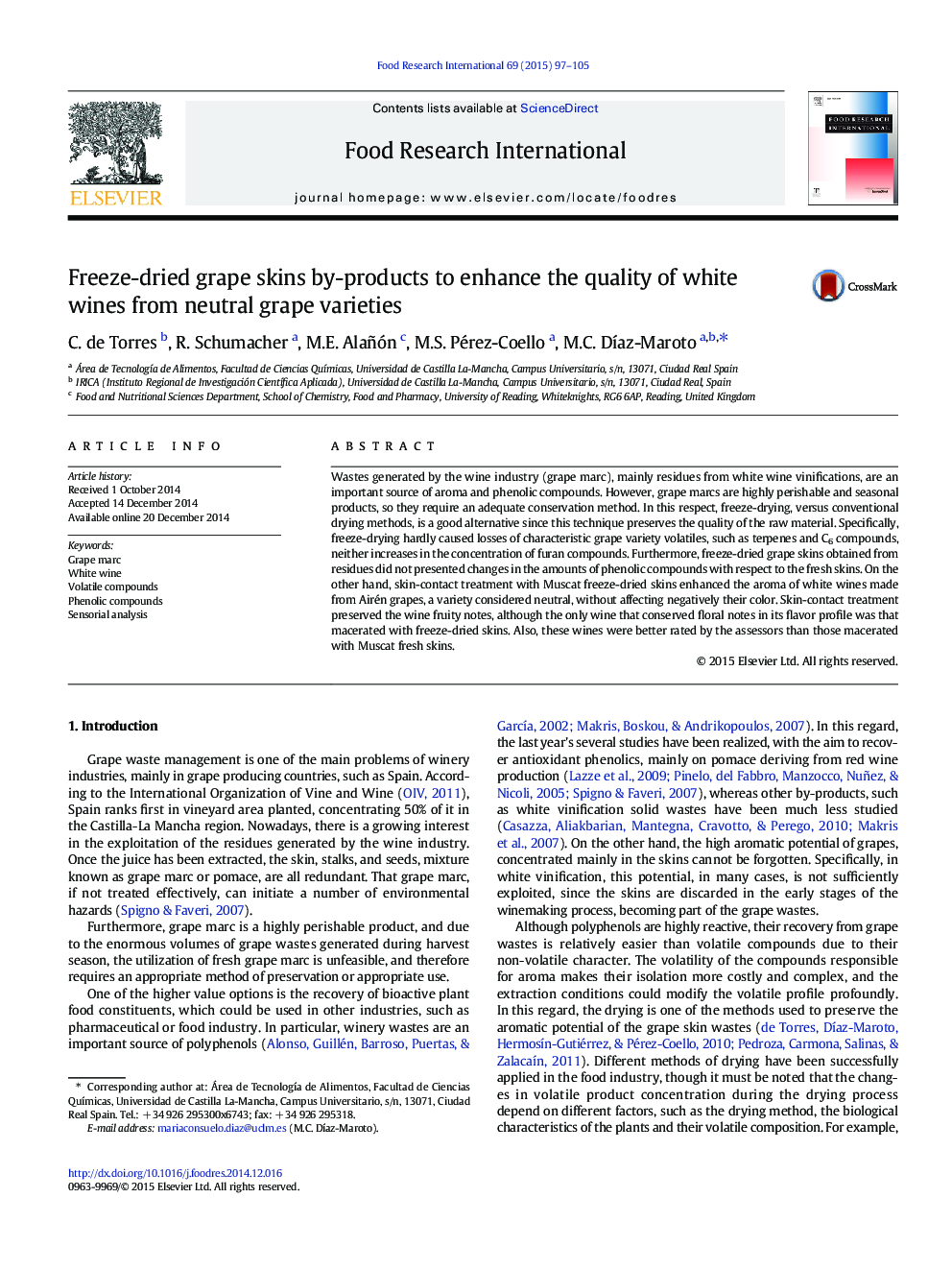| Article ID | Journal | Published Year | Pages | File Type |
|---|---|---|---|---|
| 6395553 | Food Research International | 2015 | 9 Pages |
â¢Freeze-drying allows to preserve the aroma potential of wine industry residues.â¢Freeze-dried grape skins can be used to enhance the flavor of white wines.â¢Oven drying produces an increase in furan compounds of wine industry residues.â¢Freeze-drying hardly caused losses of terpenes and C6 compounds.â¢Freeze-dried skin-contact treatment preserved the wine fruity and floral notes.
Wastes generated by the wine industry (grape marc), mainly residues from white wine vinifications, are an important source of aroma and phenolic compounds. However, grape marcs are highly perishable and seasonal products, so they require an adequate conservation method. In this respect, freeze-drying, versus conventional drying methods, is a good alternative since this technique preserves the quality of the raw material. Specifically, freeze-drying hardly caused losses of characteristic grape variety volatiles, such as terpenes and C6 compounds, neither increases in the concentration of furan compounds. Furthermore, freeze-dried grape skins obtained from residues did not presented changes in the amounts of phenolic compounds with respect to the fresh skins. On the other hand, skin-contact treatment with Muscat freeze-dried skins enhanced the aroma of white wines made from Airén grapes, a variety considered neutral, without affecting negatively their color. Skin-contact treatment preserved the wine fruity notes, although the only wine that conserved floral notes in its flavor profile was that macerated with freeze-dried skins. Also, these wines were better rated by the assessors than those macerated with Muscat fresh skins.
